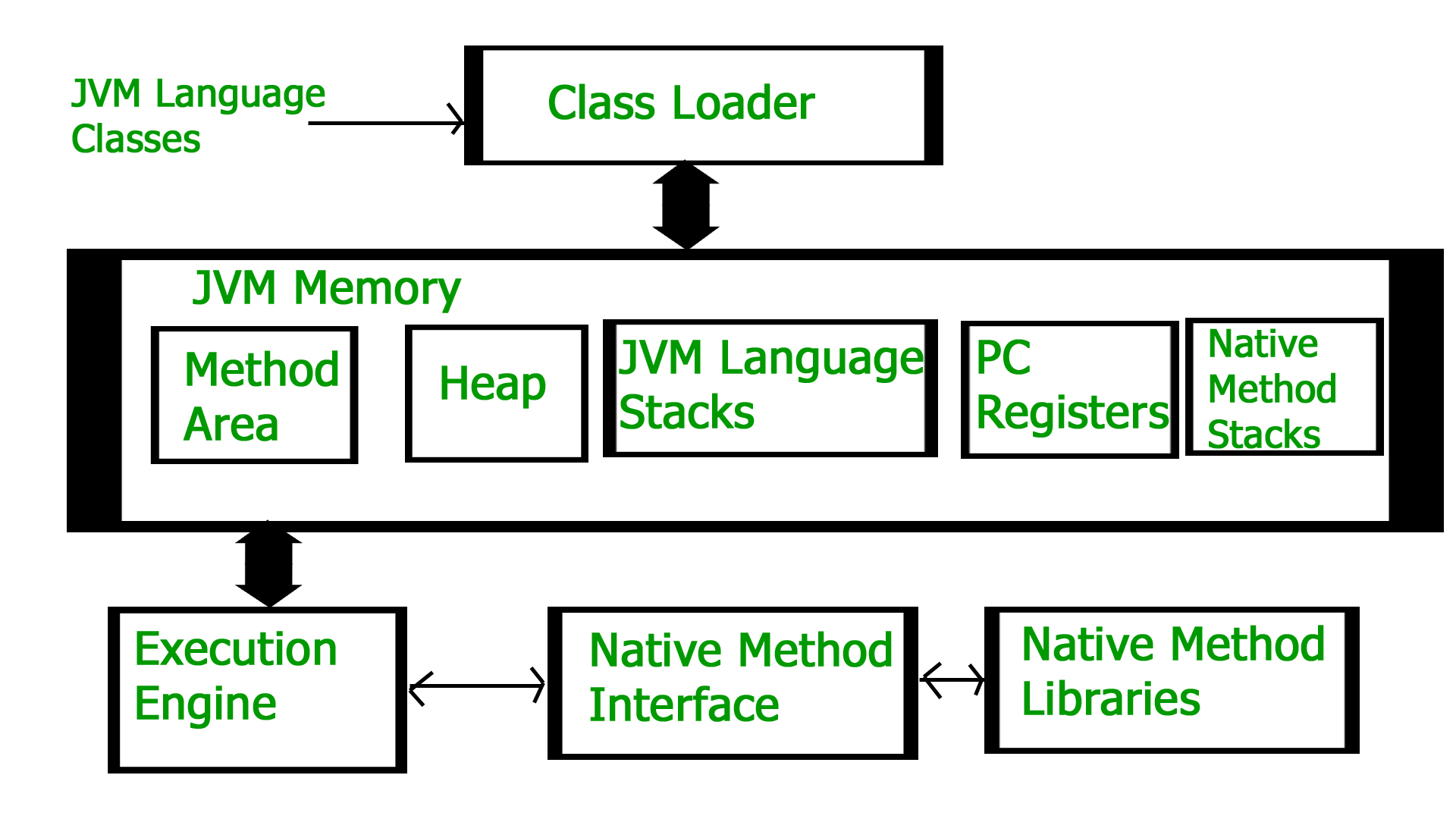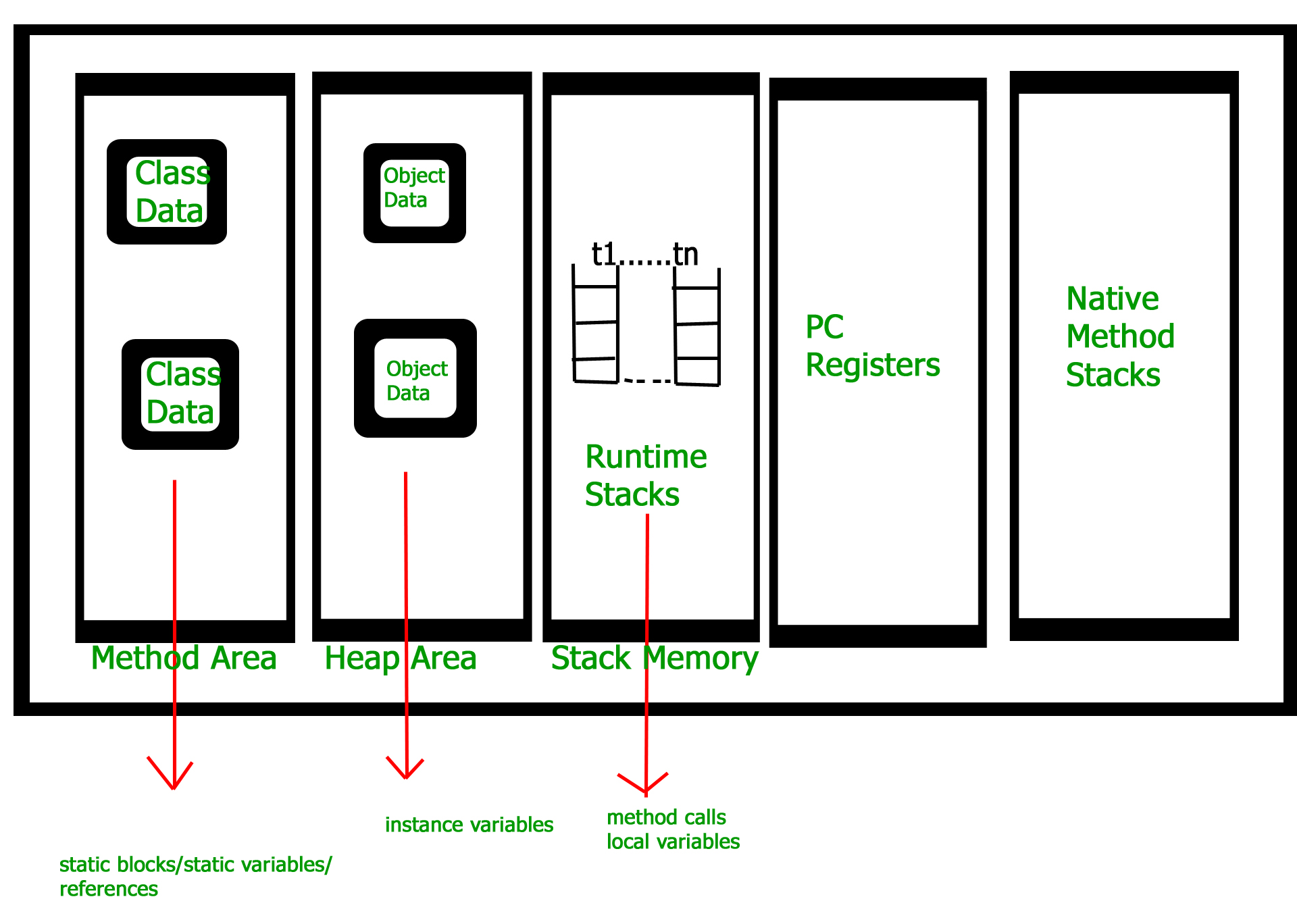

JVM(Java Virtual Machine) acts as a run-time engine to run Java applications. JVM is the one that actually calls the main method present in a Java code. JVM is a part of JRE(Java Runtime Environment).

Java applications are called WORA (Write Once Run Anywhere). This means a programmer can develop Java code on one system and can expect it to run on any other Java-enabled system without any adjustment. This is all possible because of JVM.
When we compile a .java file, .class files(contains byte-code) with the same class names present in .java file are generated by the Java compiler. This .class file goes into various steps when we run it. These steps together describe the whole JVM.
In the method area, all class level information like class name, immediate parent class name, methods and variables information etc. are stored, including static variables. There is only one method area per JVM, and it is a shared resource.
Information of all objects is stored in the heap area. There is also one Heap Area per JVM. It is also a shared resource.
For every thread, JVM creates one run-time stack which is stored here. Every block of this stack is called activation record/stack frame which stores methods calls. All local variables of that method are stored in their corresponding frame. After a thread terminates, its run-time stack will be destroyed by JVM. It is not a shared resource.
Store address of current execution instruction of a thread. Obviously, each thread has separate PC Registers.
For every thread, a separate native stack is created. It stores native method information.

Execution engine executes the “.class” (bytecode). It reads the byte-code line by line, uses data and information present in various memory area and executes instructions. It can be classified into three parts:
It is an interface that interacts with the Native Method Libraries and provides the native libraries(C, C++) required for the execution. It enables JVM to call C/C++ libraries and to be called by C/C++ libraries which may be specific to hardware.